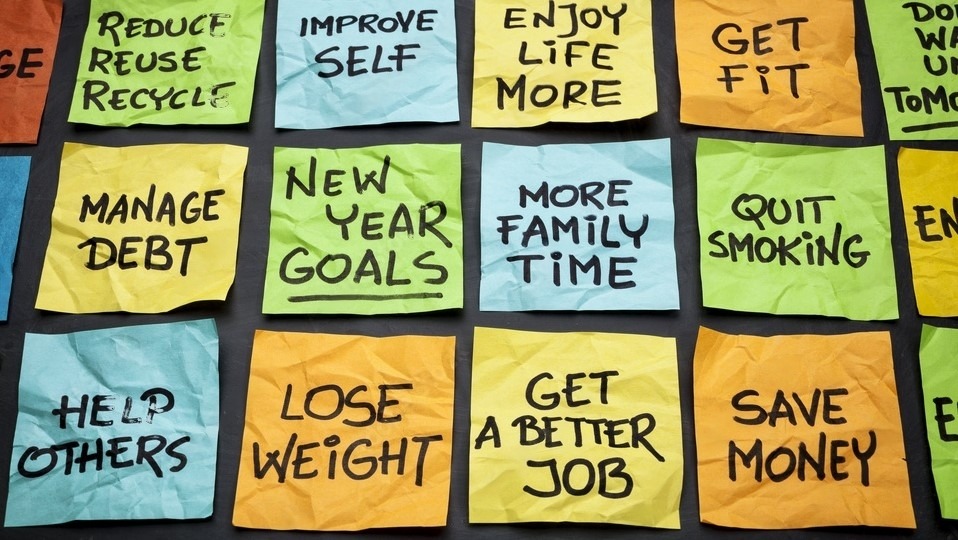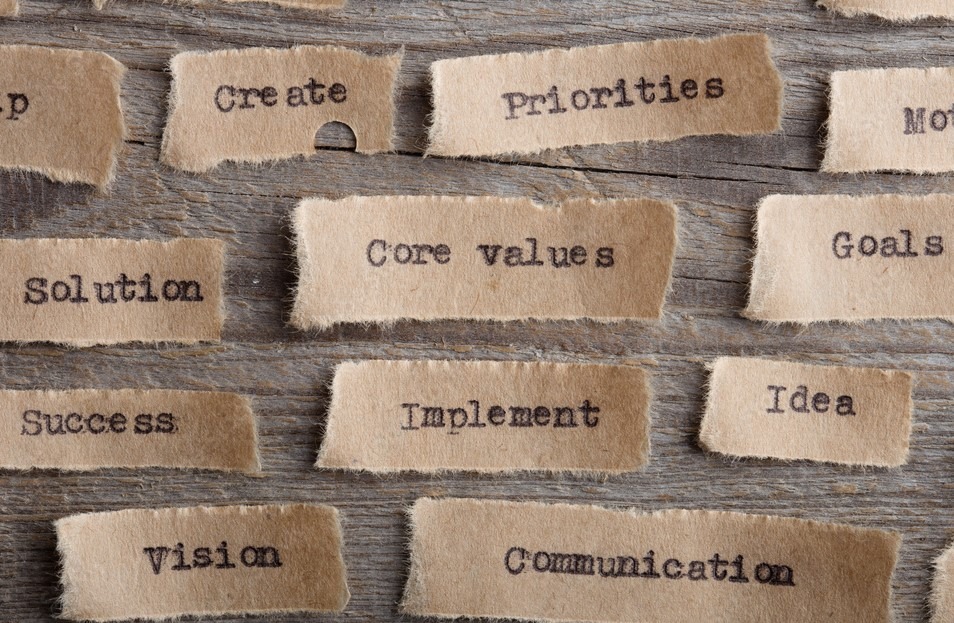Making Resolutions that are More Likely to Stick!
It’s January, the wind down month after several holiday seasons. We often feel the need for big change during this time. Maybe it’s related to needing to detoxify from the busy times or trying to shake off the effects of the long night but in one way or another with the new year it feels like a solid start time to try something new – the resolutions.
So, this brings us to New Year’s Resolutions. A common theme in North America is to create a resolution or commitment to change for the next year. This is a great idea, to set some long-term goals for the year! Even more so if these are aspirational resolutions. However, many people do not set these as aspirational and can feel dejected when they are unable to meet these resolutions.
The early numbers related to New Year’s Resolutions completion were a little dejecting in one study from the 70s – 77% of people keep attempting their goal at 1 week, 55% keep going at a month, 43% at three months, and by two years – 19% of people have continued working towards their goal. It does not sound super encouraging. On the other hand, more recent studies demonstrated that people that do choose to make resolutions were found to be more likely to complete their resolutions than those who choose similar goals at other times of the year. This rate of success 46% at new years to 4% at other times!
These are some suggestions to help you get started on being part of the group that continues working towards their resolutions. Keep in mind, not every tool in the toolbox works for every person. Sometimes, these types of tools can be less helpful when you’re experiencing mental health concerns. If you’re having difficulty meeting your resolutions and think mental health may play a role – book a risk-free consultation with us today!
How big is your goal?
When we choose resolutions that are too big, they become unachievable. This can be due to the pressure created by the size of the resolution, the complexity of completing it, or that it’s too far out of one’s wheelhouse which can increase the difficulty of achieving this goal. If you’ve ever tried to train a puppy, you might have heard of the concept of shaping.
This is where you adjust one behaviour slightly as you progress to create a different behaviour. One example from my life – My dog doesn’t like to come inside. She’ll try to stay out there forever, and this led her to avoiding the door to come inside. So, I started providing praise when she would walk slightly toward the door. Each week she would go closer and closer to the door with praise being removed from the previous action but maintained for the closer version. Now, she’ll come back to the door when she is called. A slight deviation in her behaviour created an opportunity for me to shape it into something I needed instead. Humans aren’t so different when it comes to adjusting behaviour.
So always consider, how can I adjust my behaviour slightly to begin to build the change I want to see?
Do you have all of the Information?
As the saying goes, information is power! Doing your homework on the resolutions you set greatly increases the likelihood of completing them. When you’re trying to decide on a resolution, or when you’re ready to start working towards your resolutions, try to make a plan for those times when you will encounter difficulties. These difficulties can be with motivation, energy, being busy, or anything that may just put a stop sign in front of your resolution.
This includes determining what you want your resolution to be as well as what you’ve determined “failure” to be. Now, I understand that this sounds a little existential however, you actually are the determining factor in deciding what constitutes achieving a resolutions! If you’ve completed 90% of a resolution, does that mean you’ve failed because you haven’t reached 100%? What about 50% or 30%? If you’ve moved forward from your starting point does that mean you’ve succeeded? Try to add in some self-compassion here and learn from the parts that you weren’t able to move forward on. That gives you more motivation to try again at a later time.
Have you created Interim goals?
We know that humans have a limited capacity for self-regulated strength. This is more commonly known as “will-power”. How often have you heard someone, or you say, “I just don’t have the will power”? Probably more often than you’d like. The difficulty with self-regulation is that other stressors in our lives whittle away at this as well. So, while you may actually have the self-regulating skills to meet the target you’ve set, the other stressors in your life may interfere with your ability to access these skills consistently.
This brings us to the importance of interim goals. These are resolutions that help support your aspirational, larger, or longer-term resolutions. Think of these like steps you’ve carved into the mountain you’re trying to climb. Or, if you like video games, as a save point before you move forward.
These types of goals also assist you in tracking your progress!
Can you find some type of Social Support?
Research tells us that if we have another party help us to be accountable for our resolutions than we are more likely to achieve them. It’s actually not just for goal setting, research helps to demonstrate that social supports help us to engage in many more things than we typically would.
Now, this doesn’t have to be friends or loved ones or even a person, though it definitely can be if those people are available to you! For those of us who don’t have access to these supports, we can branch out and look for support in other ways. Social support is any kind of group, pet, app, or forum that helps you to stay accountable to your resolution.
Are your resolutions SMART?
SMART is a goal setting strategy that encompasses many of these values. It helps to ensure that you are able to notice when you’ve completed a resolution and great accountability within you to attempt to do so in a time frame. SMART is an acronym, standing for specific, measurable, achievable, relevant, and time bound.
**Please note that the following example will be discussing weight loss. if you’re concerned about possible eating disorders and that a discussion of calorie counting, measuring weight, and focusing on physical appearance may trigger, please call us to help you set up these resolutions in a helpful way rather than read to the end!**
We want to make sure that our resolutions are as specific as possible. Try not to have large, generalized resolutions if possible. This is especially true if you’ve had a history of feeling really down after not reaching an aspirational goal. Let’s use a common example of “I’d like to lose 10 lbs”. This is a great example of a specific goal.
Next, we want to make sure that the resolution can be measured. In our example, weighing yourself is the primary method of measuring. Please note that if you’re concerned about possible eating disorders that calorie counting, measuring weight, and focusing on physical appearance can be triggering, please call us to help you set up these resolutions in a helpful way!
After we’ve determined how to measure our specific resolution, we want to check to see if it is something that is achievable. This is where information gathering plays a big role. Have you attempted this goal previously? What did it look like for you? Were they helpful? What does research say about your goal?
Once we’ve determined that it is achievable, we want to ensure that the resolution is relevant to our larger goals. See how it fits into your current like and why it is so important to achieve. Is there another resolution that would meet your needs better? Like instead of weight loss would focusing on running 1 km or going down one belt size be a better fit for you?
Now, it’s the final step of putting a time limit on this. We want these to be generous while still pushing us to meet that resolution. In this case, what is a reasonable time frame to lose ten pounds? Is it one month? Two? Six? That is a discussion for you and your doctor as well. Especially when choosing to begin exercise or diet changes in the new year, check in with your doctor. They may also have some ways to help or groups to increase social support.
So, an entire SMART goal would look like:
I would like to lose 10 pounds, which I will measure by using a scale, and this will occur over a 10-month period.
I hope this helps with everyone hoping to achieve their resolutions out there this year! If you would like some help with your resolutions, book a risk-free consultation with us!












